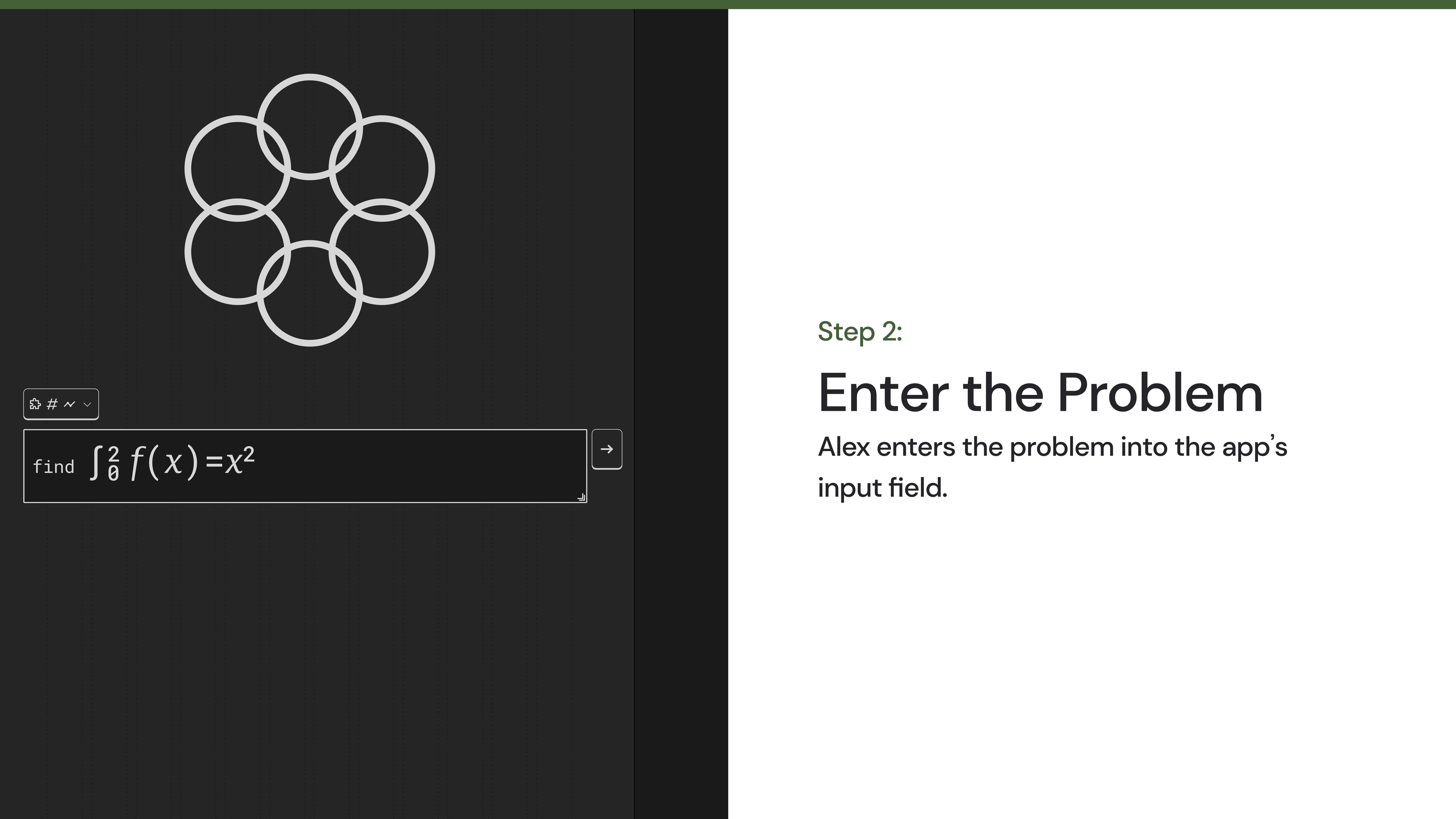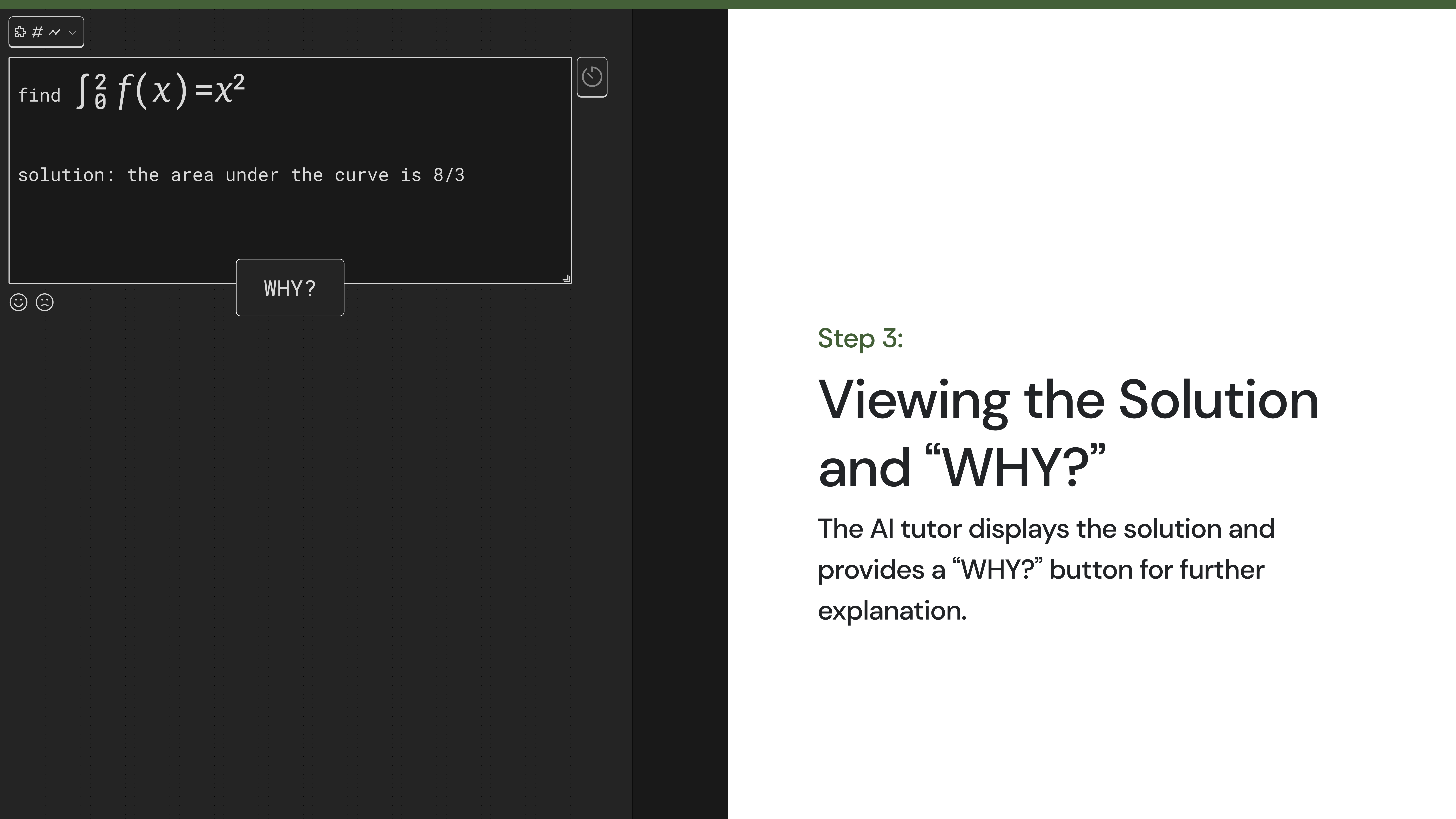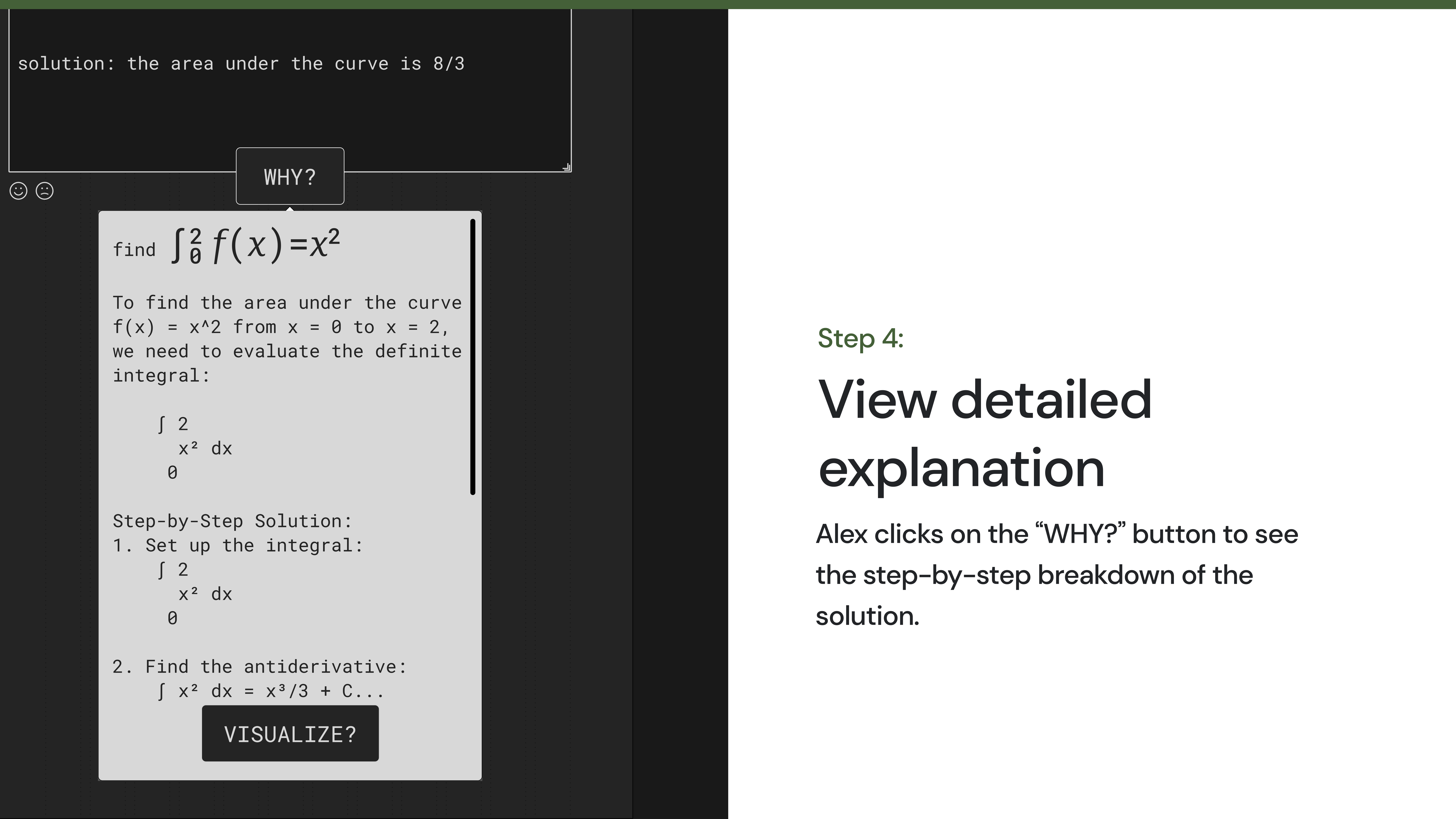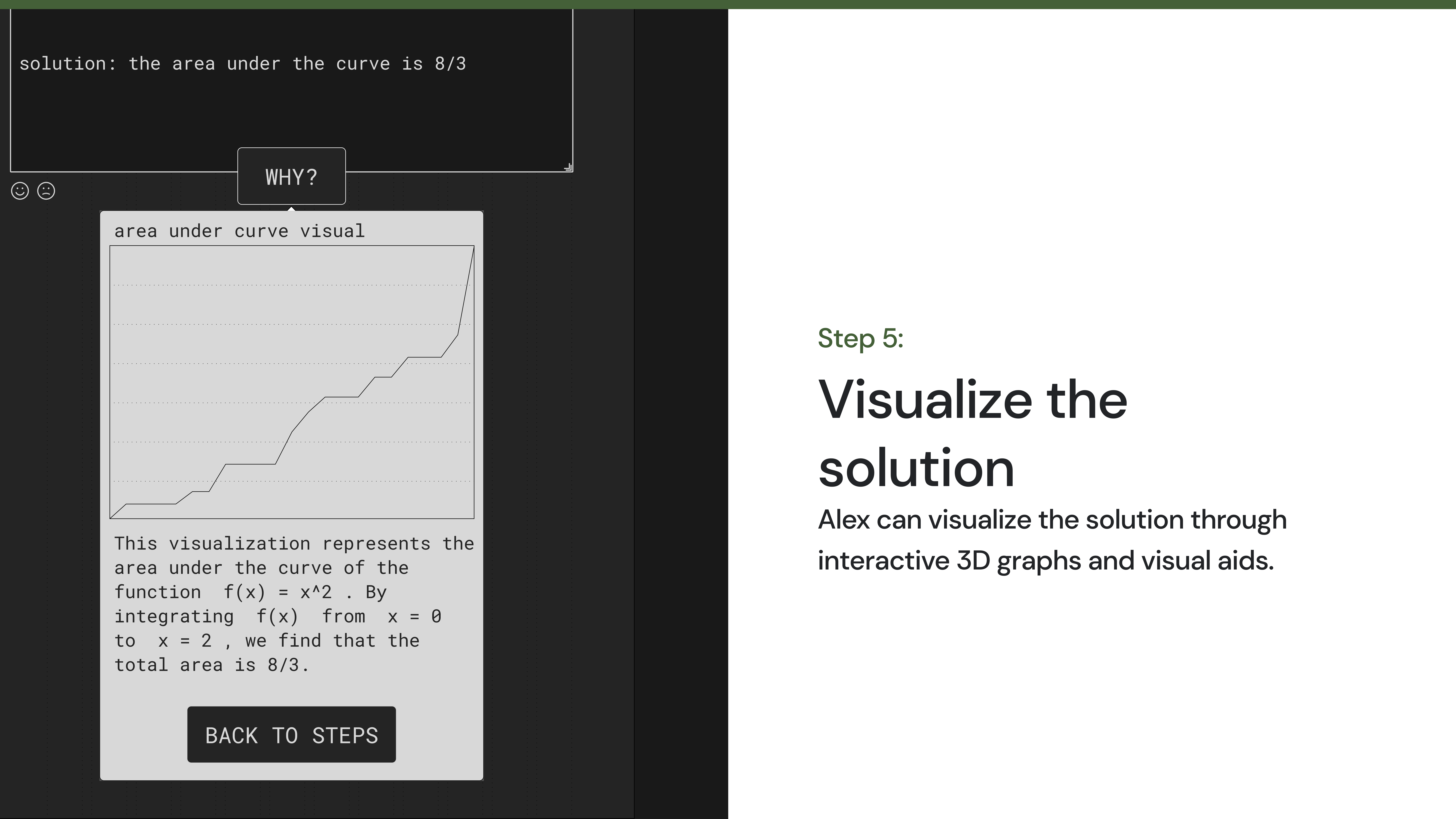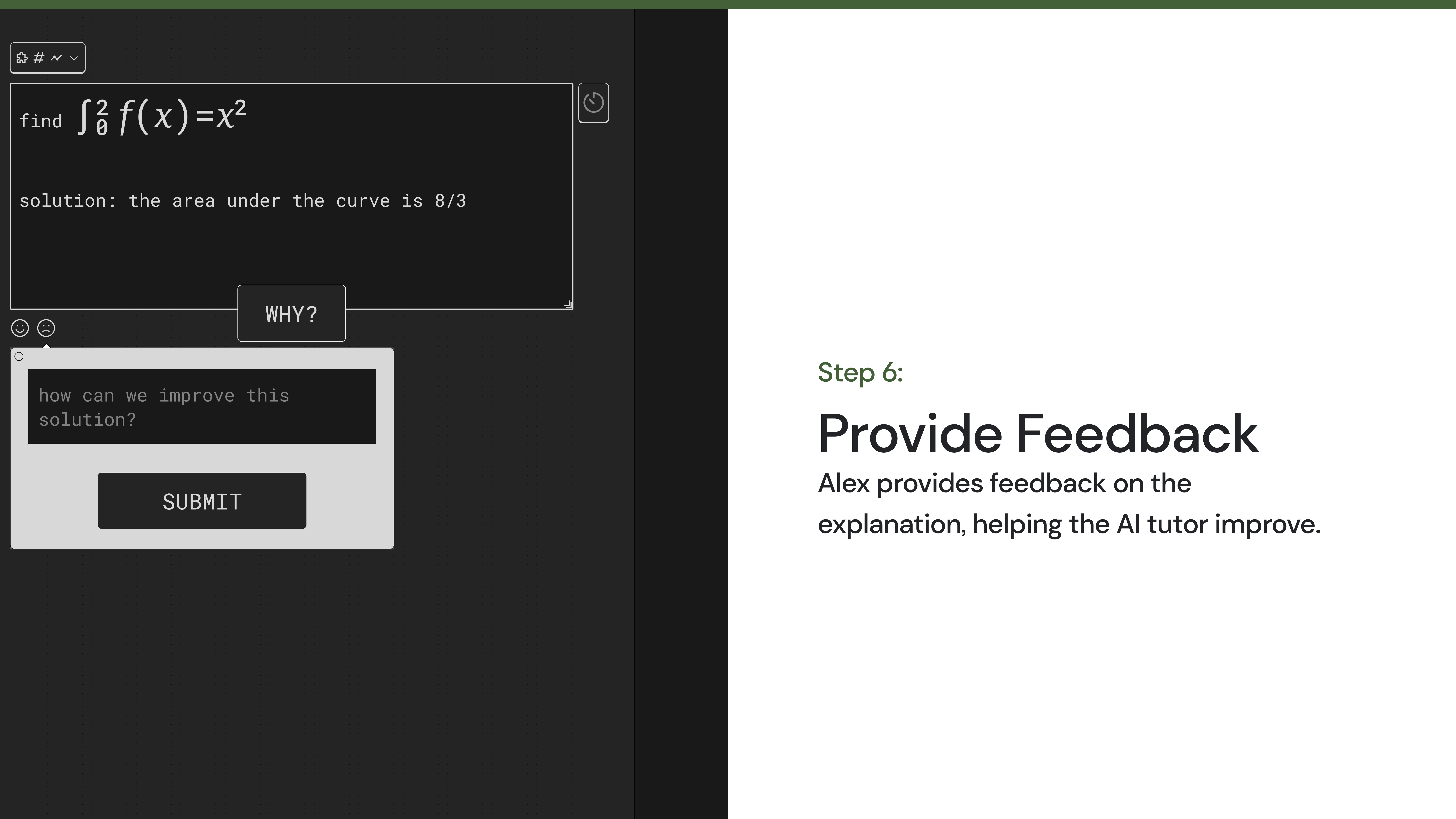Explainable AI Project: Making AI Transparent for Better Learning
In this project, I worked on developing an AI-powered educational tool that enhances learning through explainability and interactivity. The goal was to create a system where complex AI outputs are not just delivered but clearly explained with interactive visual aids. This project focused heavily on the intersection of education, AI, and user experience, ensuring that learners could not only solve problems but understand the 'why' behind the solution.
Conceptual Model
We structured the project around core principles of explainability, transparency, and interactive learning. One major user scenario involved Alex, a calculus student struggling with integrals, who was able to understand and solve challenging problems using this AI-powered tutor.
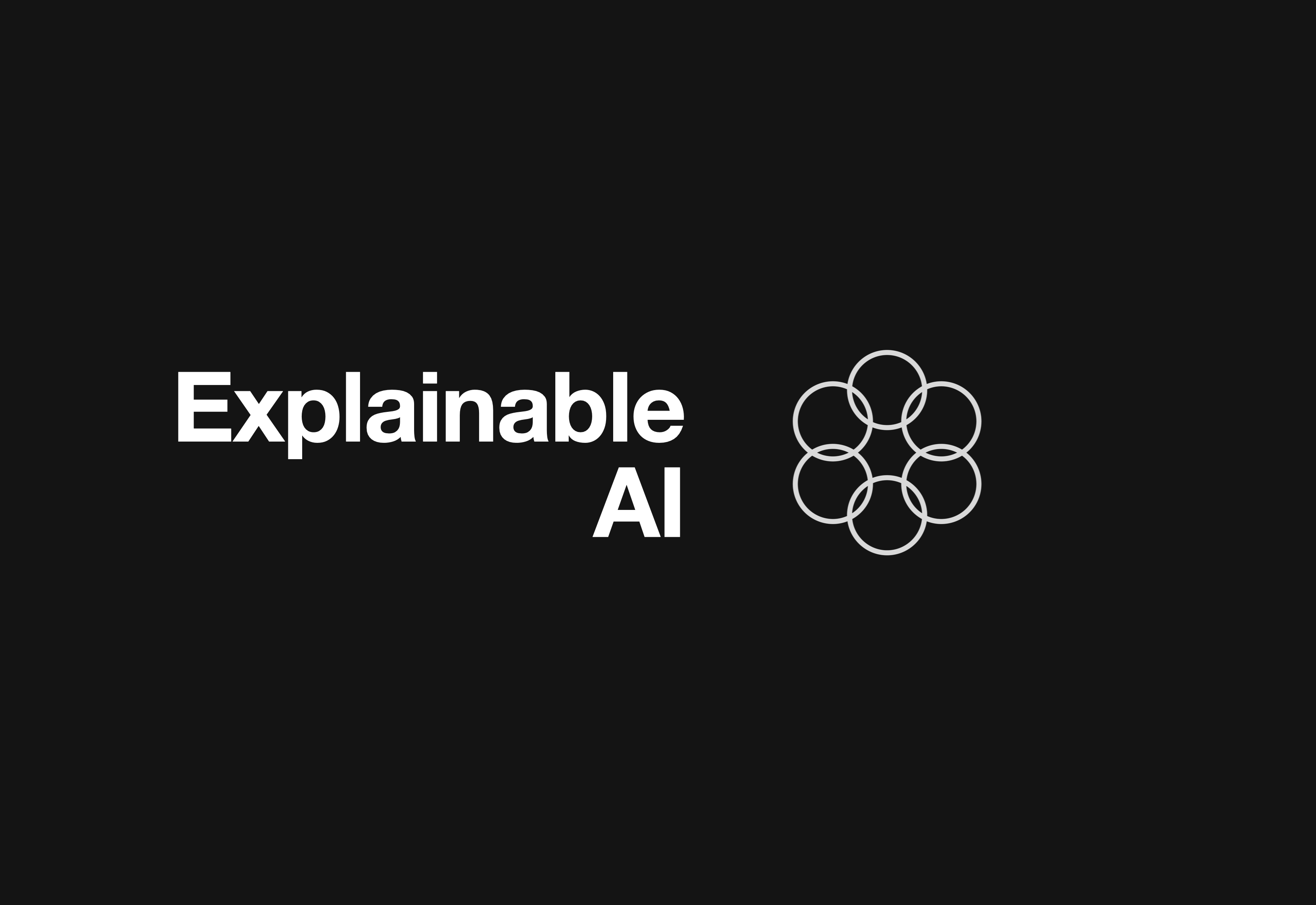
This tool wasn’t just about providing answers; it also explained why the solutions were correct. Visual aids like 3D graphs and interactive steps further helped bridge the gap between explanation and comprehension.
User Flow & Solution
This user flow illustrates how a student, like our persona Alex, interacts with the AI tool to solve complex mathematical problems step by step, while understanding the logic behind the solutions.
The user flow was designed to not just solve problems but to teach users why the solutions were valid. This approach improved problem-solving confidence and helped users grasp fundamental concepts through explainable AI.
Key Insights & Learnings
Several key insights from this project included:
- Explainability as a Learning Tool: Users valued the detailed breakdowns of solutions. By offering both the answer and the underlying reasoning, the AI made learning more accessible and engaging.
- Visualization Power: Interactive 3D visualizations helped students, like Alex, understand abstract concepts by showing them in a tangible form.
- Feedback Loop: The 'WHY?' button empowered users to get in-depth feedback, enhancing comprehension while also contributing to a sense of control in their learning process.
Reflection & Future Opportunities
This project illuminated the immense potential of AI to not only solve problems but also enhance learning through clear explanations and interactive tools. Moving forward, I see opportunities to integrate more personalized AI feedback and further enhance the visualization capabilities, helping students across diverse subjects.

